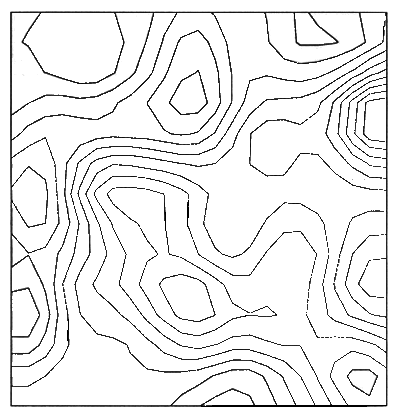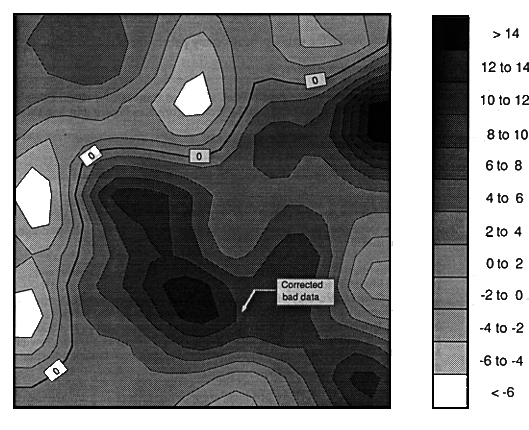
Technical Writer/Editor: Nancy Dawson
Documentation Production:Christine Guzy
The author thanks Herb Poppe of SCD and Paul Bailey of ACD for many helpful conversations on Mac hardware and software during the preparation of this document.Copyright 1994 University Corporation for Atmospheric Research (UCAR)
All Rights Reserved
Canvas is a trademark of Denebra Systems. Illustrator is a trademark of Adobe Systems. Macintosh is a trademark of Apple Computer, Inc. MetaPICT and GraphPorter are trademarks of GSC Associates. Microsoft Word is a trademark of Microsoft. PageMaker and FreeHand are trademarks of Aldus Corp. PICTure This is a trademark of FMG, Inc.
The National Center for Atmospheric Research is operated by the University Corporation for Atmospheric Research and is sponsored by the National Science Foundation. Any opinions, findings, and conclusions or recommendations expressed in this publication are those of the author and do not necessarily reflect the views of the National Science Foundation.
The PIXELIX package also contains an application to make the reverse conversion-Mac PICT files into CGM format. GSC offers a similar application as a separate application (GraphPorter) at an additional cost. Neither of these applications was tested by the SVG staff. (The other two products do not have this capability.)
Of the four products reviewed, we were unable to complete the test of "PICTure This" because it would only accept 3 of the 14 files. Of 14 test files submitted to "PICTure This," 6 of the files locked up the workstation completely, 5 of the files were reported as being corrupt, 1 produced a blank picture, 1 had so many drawing errors as to be barely recognizable, and the final 1 had incorrect colors and text positions. All of these test files are known to be correctly coded and have been successfully interpreted by four independent CGM interpreters. For the above reasons, "PICTure This" is not included in any of the following discussion.
Table 1 summarizes the capabilities of the other packages, indicates whether the package supports the listed functionality, and if so, whether it does so correctly. Throughout this document, the name of the Mac converter from PIXELIX will be identified as "PIXELIX," since the product does not have a separate name.
Table 1. Comparison of Basic Functionality
Functions MetaPICT GraphicsVu PIXELIX Polylines ----------------------------------------------------------------- All line types supported? yes no yes Line widths correct? yes no no Line colors correct? yes yes yes Lines always correctly yes yes no positioned? Polymarkers ----------------------------------------------------------------- ll standardized markers yes no yes supported? Markers correctly positioned? yes yes no Default marker 3 correct? yes no no Marker colors correct? yes no yes Marker size scale factor correct? yes no no Fill Area ----------------------------------------------------------------- Fill colors correct? yes yes yes Fill algorithm correctly yes yes yes implemented? Hatch patterns supported? yes no yes Default hatch index 1 correct? yes no no Default edge visibility correct? yes yes no Text ----------------------------------------------------------------- Horizontal text alignment yes yes no correct? Vertical text alignment correct? yes no no Text color correct? yes yes yes Text paths correct? yes no no Character spacing honored? no no no Character expansion factor no no no honored? Character height correct? yes yes no Characters drawn at angles yes no no correct? Cell Array ----------------------------------------------------------------- Full cell array support? yes no no Boundary around cell array if no N/A no no cell array support? Background Color ----------------------------------------------------------------- Option for identifying color yes no no index 0 with background? Possible to specify an overriding yes no no background color? Reverse background color without no yes no reconversion? Miscellaneous ----------------------------------------------------------------- Clipping correct? yes yes no Possible to get a human-readable yes no yes dump? Possible to go from PICT to CGM? yes no yes Correctly interpret CGM yes no no partitions? Support for generic binary yes yes yes encoded CGMs? Support for NCAR privately no yes no encoded CGMs? Display PICT file from within the yes yes no application? Non-default picture sizes yes yes yes available? Arbitrary resizing of pictures yes yes no possible? Possible to complement black-and- no no no white intensities? Able to cancel the conversion yes no yes once it has started? Possible to select pictures at yes yes no random? Progress status reports issued yes yes yes during conversion? Metafile information available? yes yes no Possible to merge random frames? no yes no Display a random frame in a no yes no different window? Does not require 32-bit color yes no yes QuickDraw?
It is useful to have control over changing the background color, since some metafiles may specify a foreground color of white but not specify the background color. The default background color on the Mac is white, so white lines will disappear into the background by default. As of September 1990, MetaPICT is the only package that allows setting of a user-specified background color, which overrides any setting in the metafile. However, GraphicsVu allows for reversal of the background color without reconverting the input file and both GraphicsVu and MetaPICT group the background as an object in Mac applications so that its color can be changed interactively (see the section Using Mac Utilities to Alter NCAR Plots below). It is the intent of the CGM standard to identify the setting of color index 0 with the background color and NCAR CGMs have assumed this identification. The next release of GraphicsVu is scheduled to allow this; the failure of PIXELIX to recognize this has caused problems in picture representations, but future releases of the PIXELIX product are scheduled to allow for this identification.
MetaPICT GraphicsVu PIXELIX
Times 32 seconds 38 seconds 148 seconds
These times are representative of other timings done with different
files and on different machines, but they are not completely accurate
in the sense that timing only the conversion step was not possible for
two of the packages.What was actually timed is as follows:
Objects can also be grouped in hierarchies. For example, a polyline can constitute a group at one level, and several polylines can constitute a group at a higher level. GraphicsVu is the only package to take advantage of hierarchical grouping. At the highest level, GraphicsVu groups all CGM objects into one group, so everything in the picture can be modified at once if that group is selected. At the next level of grouping in GraphicsVu, all polylines are grouped into a single group, as well as all polymarkers, text strings, and filled areas, so that changes can be made to groups of primitives at this level. At the next level, each individual polyline, polymarker, filled area and text string constitutes a group, so they can be changed at this level. For example, an individual text string can be selected and its font, size, position, color, and so on can be changed. Also, as incorporated into Canvas, the background constitutes a group in GraphicsVu and MetaPICT, so its color can easily be changed interactively.
It takes a bit of time to fully understand the groupings offered by GraphicsVu, but once mastered they offer much flexibility. MetaPICT basically groups each individual CGM primitive in its own group, so each polyline is a group, each text string is a group, and so on. This is a reasonable approach, but if you want to make changes on a more global basis, then you will have to build new groups from the basic primitives by using Canvas tools by hand. The groupings used in PIXELIX may not meet your requirements, since the basic objects are on a small scale. For example, each individual marker of a polymarker is in its own group, so you have to manually regroup the markers to form a single group that contains the original polymarker. Similarly, each line of each polyline is a group of its own in PIXELIX.
There are several changes that could be made to NCAR Graphics to make its output more compatible with interactive modification by Mac tools. For example, when NCAR Graphics draws dashed lines, each dash in the line is drawn as a polyline. This means that to change the color of a single dashed line interactively, all of the little dashes have to be changed individually or manually grouped. Ultimately there should perhaps be a global setting for the NCAR Graphics package that would flag using features appropriate for incorporation into an interactive tool.

Figure 2: Conpack plot after modification

As of September 1990, MetaPICT is the most fully developed commercial product. However, for the purposes of working exclusively with NCAR Graphics, GraphicsVu may offer the functionality you need. PIXELIX offers less functionality than either MetaPICT or GraphicsVu. Of the three, MetaPICT is the only product that simulates color values with gray- scale patterns on a black-and-white monitor. GraphicsVu does not support low-end Macs and the PIXELIX package maps all colors to black on a black-and-white monitor.
Keep in mind that all of these products are moving targets and are actively being developed. For example, GraphicsVu developers have said that they plan to support all marker types and colors as well as the hatch fill patterns in the near future. PIXELIX supports more CGM functionality than GraphicsVu, but many CGM elements are not interpreted correctly. In PIXELIX, there are errors in text positioning; clipping causes drawing errors; and polymarkers are incorrectly positioned and improperly scaled.
All three vendors responded promptly to questions and suggestions. The sources and prices of the four tested packages for converting CGM to PICT format are shown in Table 2.
Table 2: Sources and Prices of Conversion Packages
Package Source Price as of
September 1990
MetaPICT GSC Associates Inc.
2304 Artesia Boulevard,
Suite 201
Redondo Beach, CA 90278-3114
(213) 379-2113 $179
GraphicsVu Perkland Associates, Ltd.
224 Warren Avenue
Berwyn, PA 19312
(215) 889-1674 $125
CGM PIXELIX
conversion P.O. Box 58
package Carnegie
Victoria 3163
Australia
BH: (03) 609-3473
AH: (03) 571-5910 $150
PICTure This FGM Inc.
131 Elden Street, Suite 108i
Herndon, VA 22070
(703) 478-9881 $ 65
Note: These prices are subject to change and some
vendors offer group discounts. Before any purchase, you should contact
the vendor for the current prices and the status of any functionality
you need.